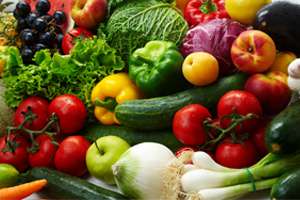Increased advertising has measurable impact on fruit and vegetable consumption

The key to getting people to eat more fruits and vegetables may be advertising, finds a new study in the American Journal of Health Promotion. Marketing seems to play a role in guiding people to eat better, said study co-author Michel Faupel, of the University of Arkansas. "It's not huge, but it's a measurable impact."
Researchers wondered if there was any difference in fruit and vegetable consumption between states with agricultural marketing programs and those without. Currently, dozens of states support advertising, packaging and in-store displays that promote fresh produce to consumers, many promoting locally grown fruits and vegetables. In Arkansas, for instance, displays at Walmart stores alert customers to sweet potatoes that were grown in the state, Faupel said.
The study examined the results of surveys held in 2000 and 2005 of 237,320 people in the U.S., asking participants about their eating habits. In states that adopted marketing campaigns during this time-frame, the percentage of those who reported they ate at least five servings of fruits and vegetables per day—the recommended amount—grew from 24 percent to 26.5 percent.
The most notable difference was in women: In states without marketing campaigns, the percentage who met the five-a-day guideline fell from 27 percent to 26.1 over the five years, but grew from 27.6 percent to 30.1 percent among those with the programs. "During a period of time when fresh produce consumption was decreasing nationally, the states that had these programs did not follow the national trend," Faupel said. "Instead their produce consumption stayed level or it increased slightly."
Harry Kaiser, Ph.D., a professor of applied economics and management at Cornell University, said the study findings are similar to those of his own research into the value of produce marketing programs. "When we look at any sort of advertising of general commodities, they generally have a positive impact. But they're pretty minor," he said.
So are these programs cost-effective? Kaiser thinks so, based on his studies of industry programs to promote the sales of things like walnuts, raisins, beef and milk. "From an industry standpoint," he said, "you don't have to have a humongous impact for it to be profitable."
More information: Howlett A, et al. The Positive Influence of State Agricultural Marketing Programs on Adults' Fruit and Vegetable Consumption. September/October 2012, American Journal of Health Promotion.
















